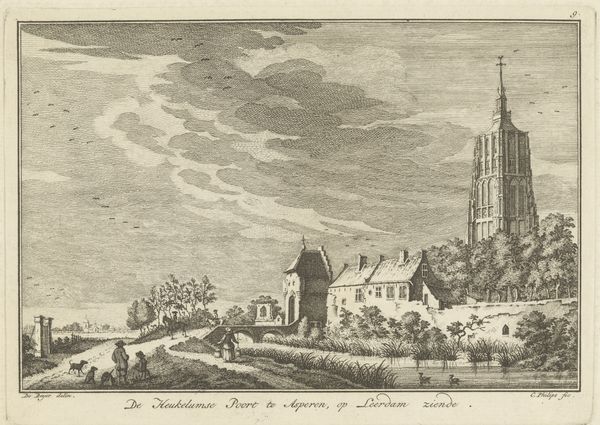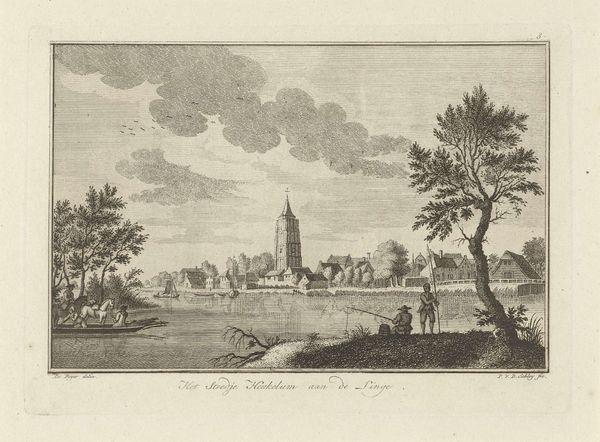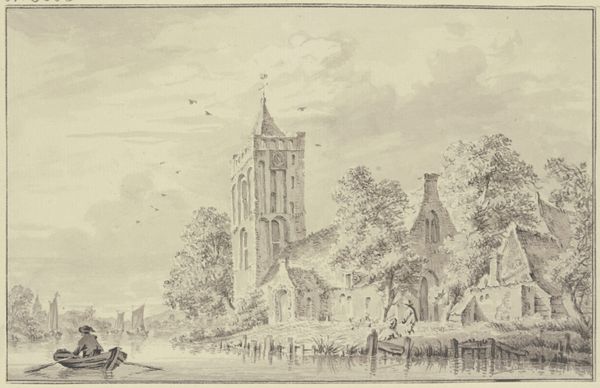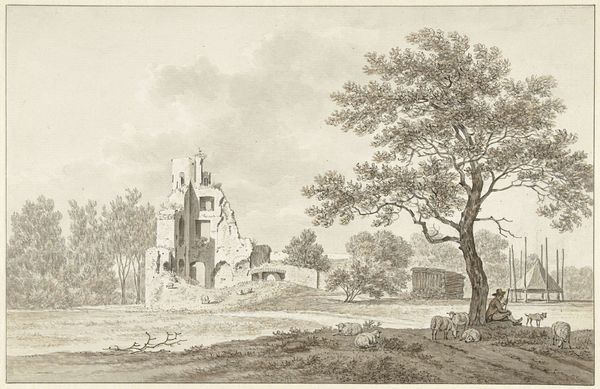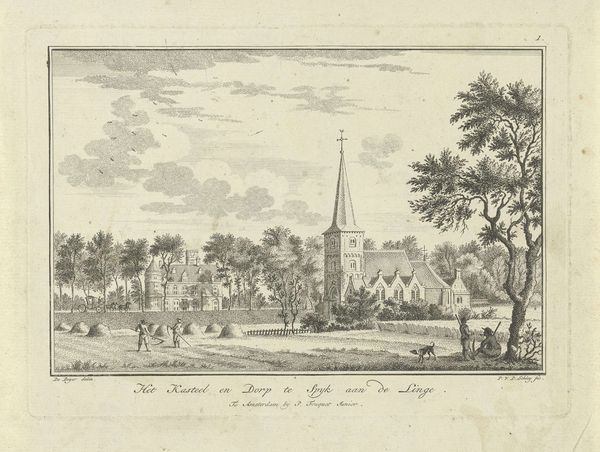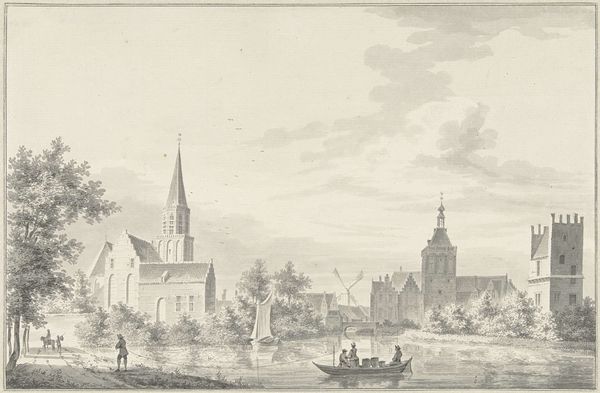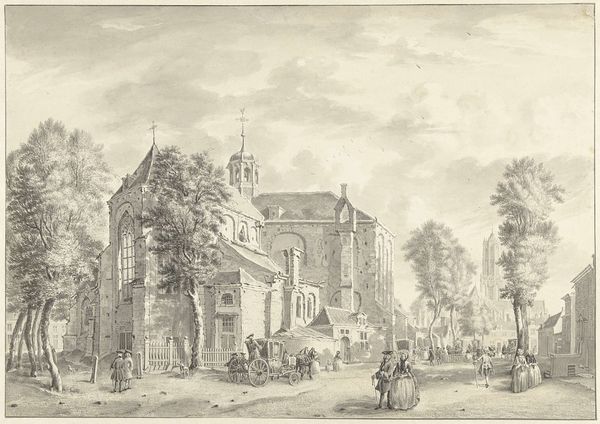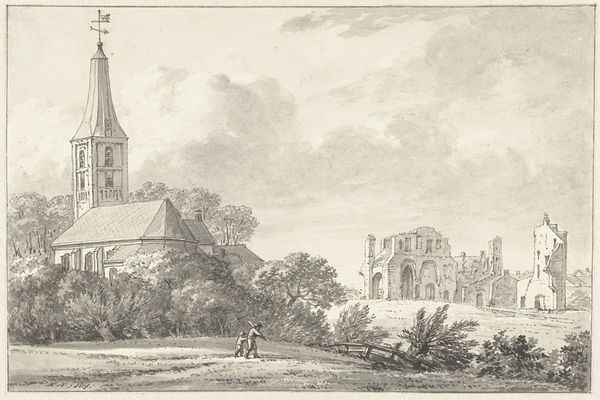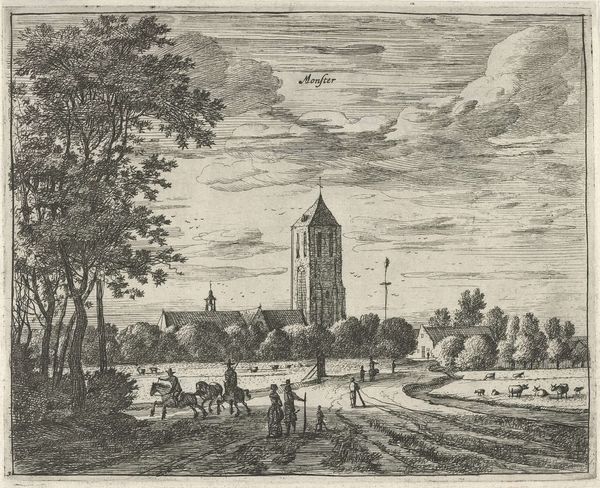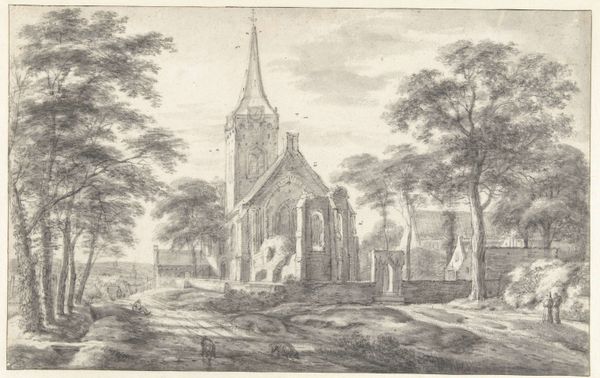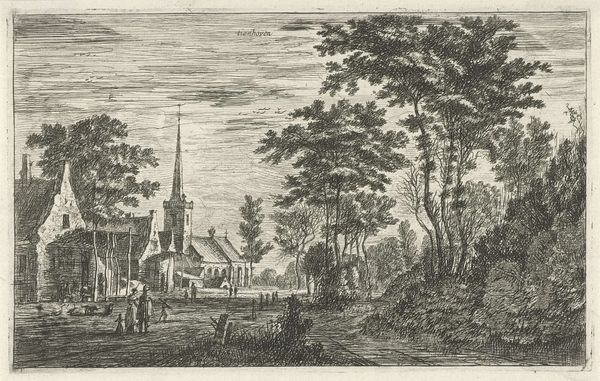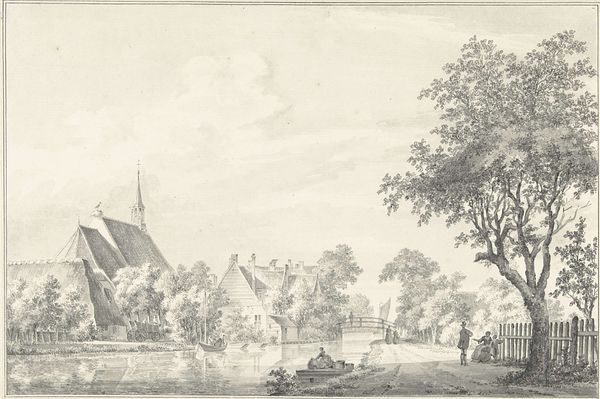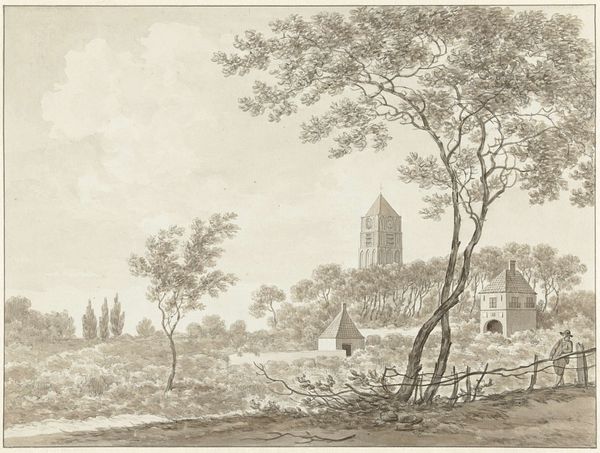
drawing, ink, pencil
#
drawing
#
neoclacissism
#
pen sketch
#
pencil sketch
#
landscape
#
ink
#
pencil
#
cityscape
Dimensions: height 205 mm, width 252 mm
Copyright: Rijks Museum: Open Domain
Curator: Here we have Hendrik Hoogers’ "View of Rhenen," created in 1771 using pencil, pen, and ink. What are your immediate impressions? Editor: Well, it’s incredibly detailed, for one. It almost feels like a photographic record of a quieter, simpler time. But also, a bit melancholic. Gray is never joyful for me. Curator: Indeed. The monochromatic palette lends a certain gravity. Hoogers, though working within a Neoclassical framework emphasizing order and clarity, captures a specific place and time. Notice the composition: the imposing church tower balanced by the figures in the foreground. Editor: That tower is the visual anchor, isn’t it? Everything leads the eye to it. And then, that wall stretching across the middle ground... almost cuts the image in half. But that group of people balances the tower. Who are they? What are they looking at? The drama seems concentrated there, despite that huge architectural assertion in the background. Curator: I wonder the same. They add a narrative element. Are they greeting the boat? Maybe contemplating the grand spire of the church? The interplay between architectural monumentality and these small, human dramas is captivating, particularly within the seemingly detached Neoclassical style. It teeters on the sentimental, but restrains itself. Editor: Precisely. It’s this emotional undercurrent that I find so engaging. I initially saw stillness and a certain quiet despair, but now I recognize it's just life happening at human scale, even beneath that dominating church tower. The artist shows you how one cannot exist without the other. That spire couldn’t pierce the heavens if it were not for people to appreciate it. Or defy it. Curator: A lovely interpretation. And, structurally, there's that intriguing contrast between the precision of the architectural rendering and the more fluid, softer rendering of the natural elements—the trees, the water... It's almost as if Hoogers is acknowledging both the man-made and the organic in the same breath. Editor: Well, it's a lot less bleak for me now, even if it remains in monochrome! What I appreciate is how seemingly objective observation transforms into something genuinely tender. Curator: A sentiment echoed, I think, in Hoogers’ delicate balance of line and wash, control and expressiveness. A seemingly simple landscape drawing opens onto profound thoughts.
Comments
No comments
Be the first to comment and join the conversation on the ultimate creative platform.
